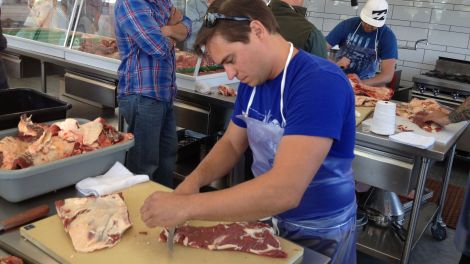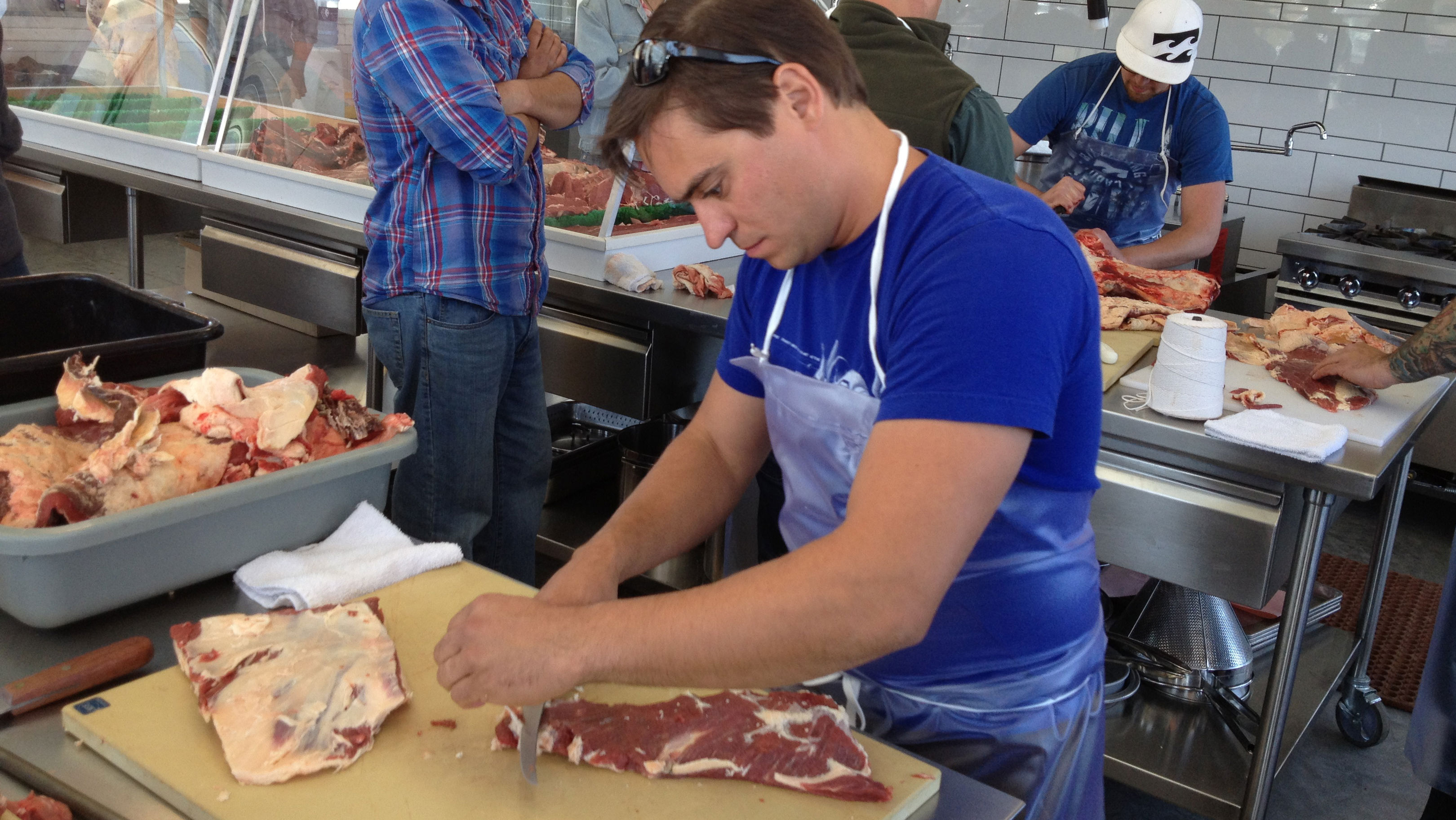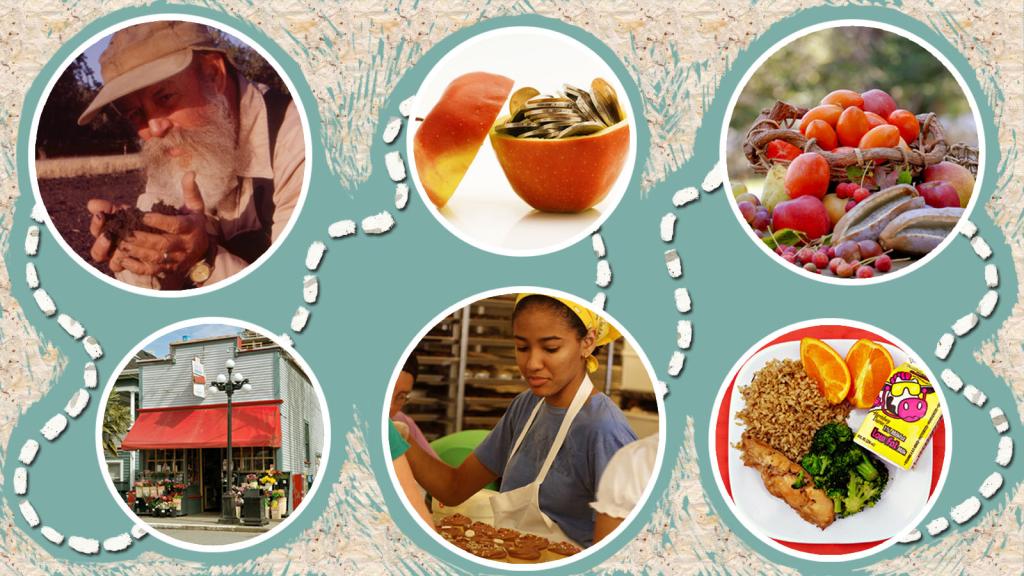
Food Craft InstituteGavin Erezuma learning his cuts
About a dozen potential students sat in as many chairs, crowded into a narrow room behind a butcher shop in San Francisco. To the right and left were murals of cattle; ahead, a bovine skull with long horns; and, in front of that, people giving a pitch for a three-week intensive class on the business of butchery.
A man in a plaid shirt near the front raised his hand. “What kind of skills do you need going into this? Have most people had some kind of butchery experience?” People come in at all levels, reassured Marcy Coburn, executive director of the Food Craft Institute. “This isn’t a class for learning how to be a butcher. It’s a class for learning how to efficiently run a business.”
Fifty years ago, the economy shrugged off butchers — along with a few dozen other food professions. They were replaced by a system of mass production, and they were well on their way to becoming as anachronistic as wheelwrights and muleskinners. But today, as more people look for alternatives to mass-produced food, there’s been a revival of interest in these jobs. People are turning their cooking or farming hobbies into businesses. Some of these people are becoming links in the supply chain for the post-industrial food economy. But others — particularly those who are better with food than with finances — are crashing.
“The question that we are trying to answer is, how do you build an equitable food system that feeds people without disastrous environmental and health impacts?” Coburn said. A big part of that, she thinks, has to do with people innovating and creating small- and medium-sized businesses. “So we’re connecting the dots between the business-savvy people in the investment world and the crafty food makers, jam makers, butchers, and picklers.”
Coburn and Anya Fernald — herself a food entrepreneur as CEO of Belcampo Meat Company — started the Food Craft Institute to help up-and-coming entrepreneurs create sustainable businesses. So far, aside from butchery, they’ve held classes on beer; coffee roasting and selling; and jams, sauces, and condiments.
The people in that room were trying to decide if they’d pay $4,000 to spend three weeks making connections with the gurus of the craft and learning every aspect of the business, from concept to opening day. “There’s some very basic, but important things you should be doing,” Coburn said. “For instance, as an entrepreneur you should be paying yourself a salary from day one. You’d be amazed at how few people do that.”
“For me, it was really useful to see the process of drawing up a business plan for investors,” Gavin Erezuma, who took the class last year, told the prospective students. “There were all these things that I couldn’t begin to know how to answer — you know, where do I get these numbers for the financials?”
Now Erezuma feels comfortable tracking the flow of money through his hands and laying out projections for potential investors. Working with meat forces you to pay exquisite attention to the movement of product through the business, he said, because — put simply — it goes bad. “You always have to know, before you even make the first cut, where is that meat going? Where am I going to sell this?” Erezuma said.
Heads in the audience nodded appreciatively.
Butcher’s Guild co-founder Marissa Guggiana stood up to hammer home the point. “The old butchers always repeat this, but that’s because it’s absolutely true: The instant you put a knife to meat, you start losing money.”
After the presentation, the potential students hung around chatting. Many of these people had some old connection — often a family connection — to the food industry. One of them, Alan Thomas, was a web developer from London who came to California on business and never left. His father had worked on a farm back in England, and Thomas found that he took great satisfaction in working raising his own animals for meat. He proudly thumbed through pictures of pigs on his smartphone. Thomas has been giving meat to friends and family, and he says he’s seen enough interest to support a business. But he doesn’t know the first thing about food safety regulations and USDA mandates: “Even things like, how do I know — if I’m taking a 300-pound pig to the slaughterhouse — that I’m getting the same pig back?”
The Food Craft Institute is just three years old, and already its alumni have started some interesting businesses. That’s a long way from Coburn’s goal of building an entirely new and better food system. But a few students at a time, people with romantic ideas about artisanal food, are learning to ground those dreams in the hard realities of market economics.
More in this series: Local food, for real



